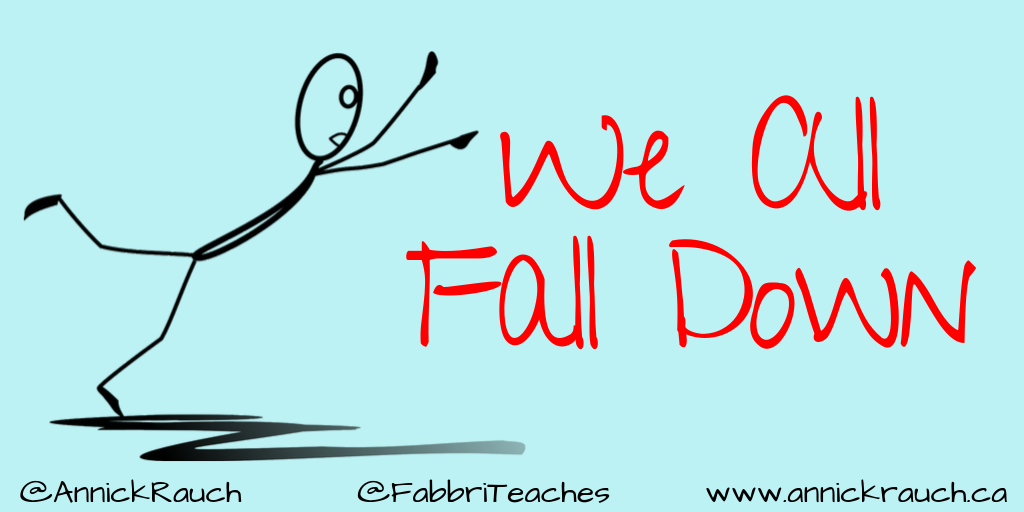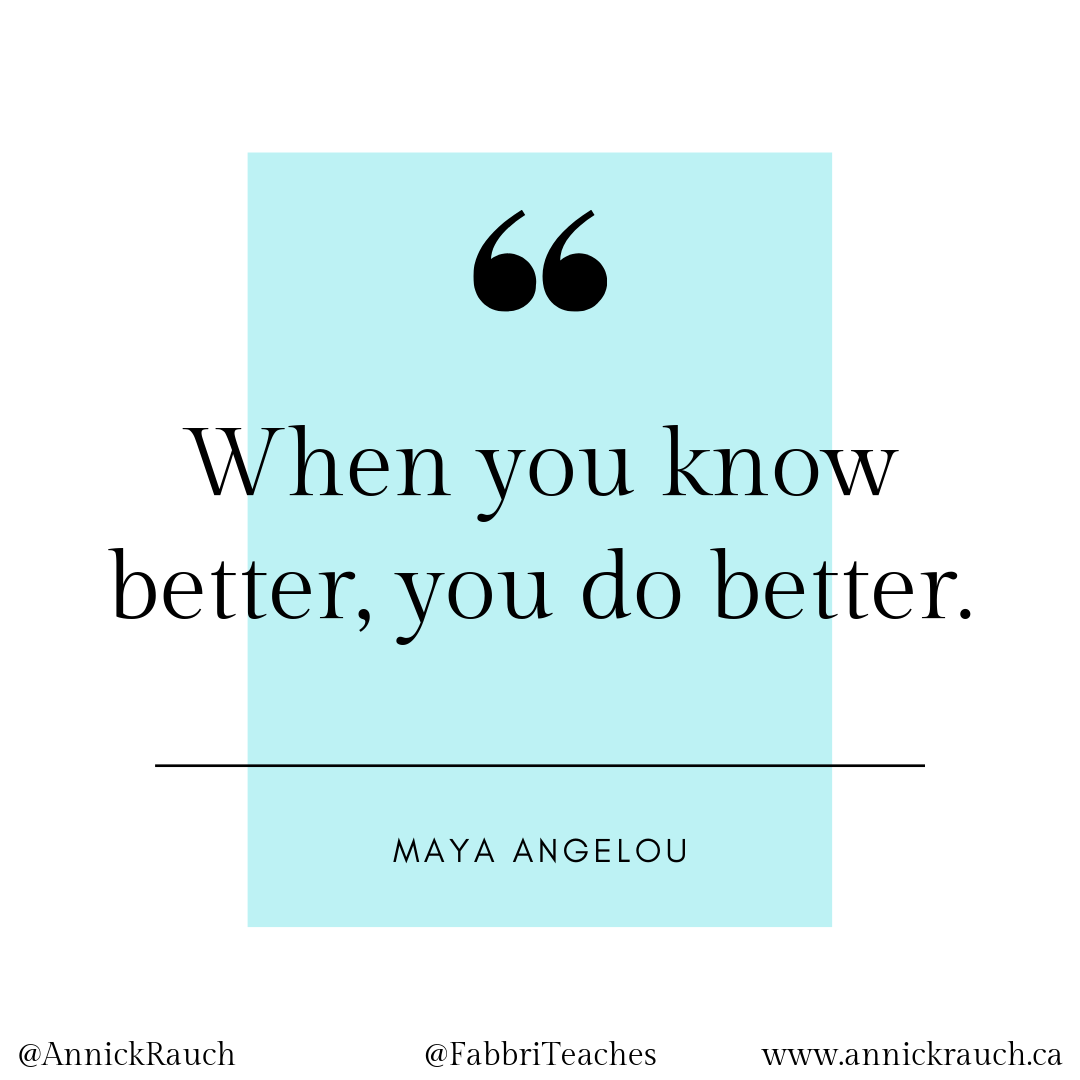We All Fall Down
So, I have this awesome teacher-neighbour, Matt Fabbri, with whom I’ve had the pleasure of co-writing on two occasions (read those here). Not only do I appreciate his perspective and willingness to have these deep conversations even after our work days are over, but I also love that we can relate and bring each other down a notch when things are rough (okay okay, maybe that last part is just one sided… but whatever! Thanks Matt!) One day, I received this text from him: “Next blog entry title: We All Fall Down”. From that moment on, I knew I had converted Matt into a blogging-believer, where deep, authentic, and powerful reflections can occur. I told Matt that he really should just start up his own blog, but with many (not so good) excuses, Matt opted to guest blog on mine instead. Lucky me. Lucky you! Matt’s awesome. Here he is…

Our first project of the year is nearly in the bag. Three intense weeks of answering the driving question: “What is Canada’s Identity?”
Establishing national identity. Simple. Easy. Right?
My EA came up to me the other day to update me on some students she was working with and said, “They’re not responding that well to advice. I just don’t want them to do poorly on this.”
Neither did I. But my response was simple:
Let ‘em fall down.
It was Friday, and I was exhausted. Hashtag-No-Filter. But my point, I clarified to her, was that we are not educators that operate transmissively and traditionally, setting up obstacles for them to jump through on a course to nowhere, like trained pups at a dog show in Westminster. We are guides in this very real process. We equip them. We train them. We consult with and advise them. We encourage them. But we also let them struggle. And sometimes fall.
I have three kids and when you have that many (That’s not many, it’s just more than one.), you learn very quickly that you have to make falling important. In our house, it’s a BIG deal.
YAAAAAAYYYYY! Applause! “Good fall, buddy! Good fall!”
And the worse the fall, the bigger the celebration. (Who am I kidding? It’s just to distract them and stop the crying before it starts.)
But, regardless, my kids learn very early on that falling is a part of learning anything. To walk. To ride a bike. To be responsible.
So, each year in my classrooms, there’s one project that we start with that’s a little shorter and a little more intense right off the bat. It’s supposed to introduce them to many things: PBL, collaboration, rigor, time management. And for my Grade 11 PBL kiddos, this is the project.
This is the one where they may stumble a bit. And struggle. And maybe fall.
And that’s okay.
But where’s the pedagogy in that, you ask, being ‘okay’ with them not doing well. It’s here: How can we be summatively assessing their work from day 1? All students need to establish a baseline, show us what they can do at this point, a beginning point from where to grow. We must allow them to do that. And we also must allow them to change behaviours, and work with us to improve their goal-setting, time management, and self-regulation strategies. It’s at this point that our strategies for teaching and coaching them are also established.
We can’t do that if the kiddos are so concerned with their “marks” from Day 1. Nor if we are too.
James Nottingham’s work in his book The Learning Challenge, especially in regard to his concept of The Learning Pit, is evocative of this mentality. (I’m a BIG fan of the Pit. A little bit Plato’s cave, a little bit Ms Frizzle’s “Make Mistakes” mantra.)
It’s here, on the ground, after the fall, perhaps with a skinned knee, where deeper lessons of reflection, revision, and (*GASP*) re-assessment can be learned.
This happens most often in my Grade 9 classroom projects wherein, for the first project of the year, the students mostly choose to work with their friends. Naturally.
In my first year at my current school, 3 boys wanted to work together. They were friends and I thought, “Well, okay. If I’m really about student voice and choice in their learning, let’s just see how this goes.”
Well. It didn’t.
They were distracted. They didn’t fulfill daily requirements. They couldn’t decide on group norms and roles (which was the whole point of this project in the first place). But insisted they could get it right if I let them continue to work together.
Well. I did.
And they didn’t.
(Shocker!)
When the project was all said and done, their short film was not completed, their presentation wasn’t polished, and their public audience – a marketing director here in Winnipeg – had a lot of notes.
During their post-project meeting, after they completely tanked, I asked “T”, one of the Three, if he needed me to give them a mark following their presentation. (I had taken notes and felt that I could give them an accurate assessment based on curricular outcomes.) He said “Nope. What she said was enough of a mark for us.”
“So, if you had to change one thing what would —“
T interrupted. “I thought that being in this group would be easiest because we knew each other and we could get along. And since the project was all about working in group and collaborating, I thought that was most important. But I’ve learned I can’t work with my friends. I’m too distracted. I need to find someone I can work with and who would be good for me. And, right now, that’s not these guys.”
That conversation stuck with me. T’s group work was not ideal. Less than, even. And he was – and still is – the first to admit it.
But what he’ll also admit, and what I’ll proudly shout from the mountaintops is: now that T’s in 12th grade, he’s a diligent student who chooses carefully, consults with teachers often, and listens to critiques thoughtfully.
He’s a different student than the one I met 4 years ago.
No, I didn’t just let him fall and leave him there. I met him where he fell. We both talked about the fall. And what needed to change for next time so he didn’t fall again.
It’s not even that he didn’t. But now his falls are different. Now he’s more aware. Now when he falls, he knows he’s falling. And he calls on me to counsel with him and advise him on his problem-solving.
T knows after 4 years what my new EA is just learning: it’s not about him being perfect and proficient from Day 1. It’s about their learning. And about us reassessing for Growth over a longer period of time.
And that means that, from time to time, we all fall down.

Thank you, Matt! Make sure you give him a follow on Twitter (@FabbriTeaches) to keep up with the awesome stuff he is doing in his classroom! And, if you’re curious to learn more about James Nottingham, check out the blog post I wrote following a day of PD with him: I Choose Interesting!
Matt, I look forward to your next blog post… because I know there will be more! 🙂

Leave a Reply